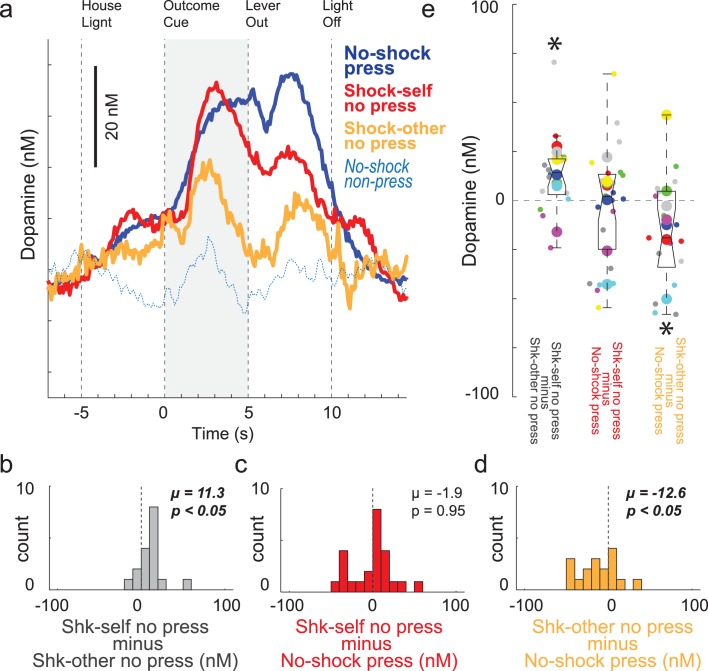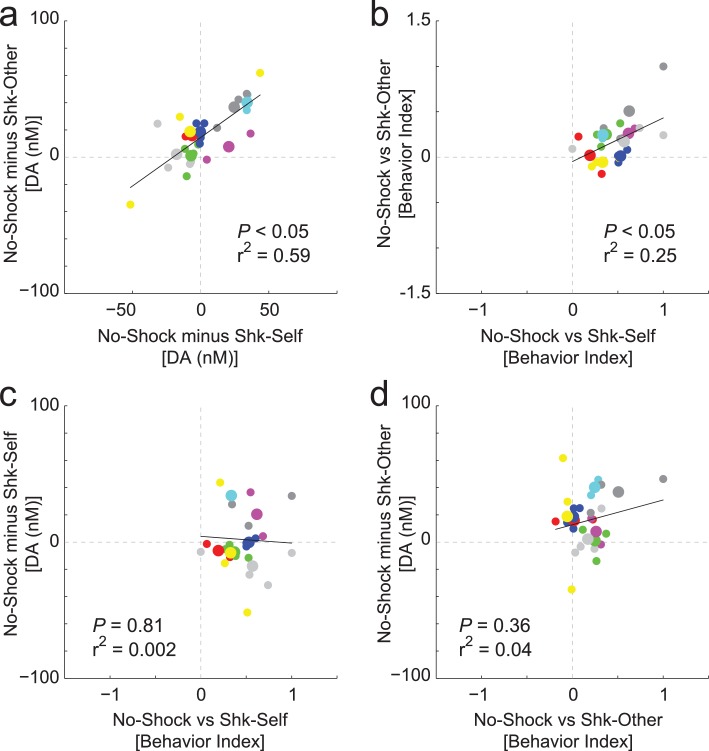Figure 7. DA release during performance of the Instrumental Social Distress Task.
(A) Average DA release (n = 24 sessions, 9 rats) over time for no-shock press trials (blue), shock-self no press trials (red), shock-other no press trials (orange), and no-shock non-press trials (light blue dashed). See Figure 7—figure supplement 1 for an example session. Note that trials during which the recording rats were shocked could not be shown due to significant noise in the signal and that there were no significant differences between shock-other press and no-shock press trials during the reward epoch (ttest; p = 0.08). (B–D) During the outcome cue epoch (5 s after cue onset) indices comparing DA release between trial-types were computed for each session. Distributions of these indices are shown in B-D. B = Shk self no press minus Shk-other no press; C = Shk self no press minus No-shock press; D = Shk other no press minus No-shock press. (E) Distributions of the same indices as in B-D except shown by session (small dots) and rat (large dots) color coded by rat identity. See Figure 7—figure supplement 2 for regression between behavior and DA release by sessions and rat. Distributions of indices were deemed significantly shifted from zero via Wilcoxon (insets provide mean (µ) and p-value).



